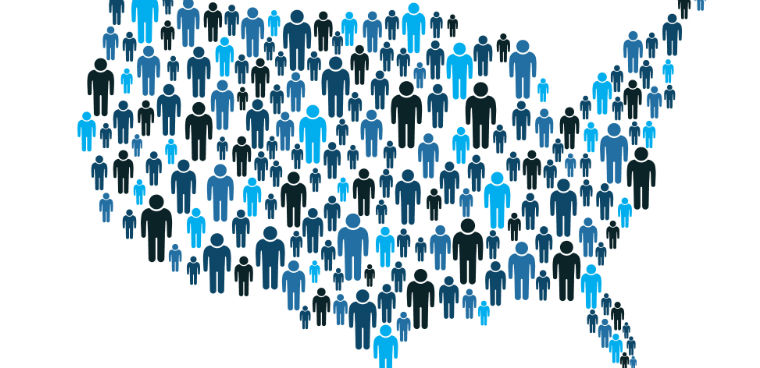

Until about 10 years ago, I thought I understood the “minority” experience as a second-generation Mexican-American. Yet it wasn’t until I starting working at a Title 1, bilingual school and married my Black husband that I increasingly realized how two-dimensional my understanding was.
As we approach 2020, there is has been continued talk from the Census Bureau about how the census will be changed to reflect our ever-diversifying country. Among others, major changes to the census include condensing the traditional two race and ethnicity categories into one race/ethnicity question with a write-in space to replace the “some other race” category.
On one hand, the proposed changes present a possible step in the right direction. Presumably the aim is to capture the heterogeneity of traditional sub-groups like Hispanic, White, African-American/Black, and Asian/Pacific Islander. An additional use includes dispersing government funds for eligible recipients and providers according to these group trends. In the 2015 fiscal year, 132 programs used census data to distribute $675 billion funds, including medical assistance, education grants, and public housing. So with an accurate account of the racial/ethnic composition comes a more accurate allocation of funds and assessment of program performance.
This is especially salient since preliminary data not only show how the number of people who are minorities is growing in the U.S., but also the number of those who self-identify as mixed and biracial. In fact, the mixed race and Asian minorities are among the fastest growing sub-groups. From the 2000 to 2010 census, “some other race” was the third largest reported group.
Proposed Changes Won’t Work
Still, even with the anticipated benefits with these census changes, as a white Latina married to a Black man with a biracial, tri-cultural daughter, I’m concerned these proposed changes still won’t work. They won’t capture the cultural complexity of our nation’s populace and thus be appropriately applied for the right groups to receive the right funding. This new question may actually further marginalize those it aims to include.
To be sure, these proposed changes will further suss out the heterogeneity of my own family. Using the traditional two question format, I’ve always been able to check “White” for question 1 and “Hispanic/Latino/Spanish” for question 2 but now I can choose “White” and “Hispanic/Latino/Spanish,” providing details below for each.
This is where the problem with accuracy starts.
Under “White” I will also have the choice of “German”, “Italian”, “Irish”, “Polish”, “English”, “French”, or a write in. This sounds great, especially with the boom of DNA testing kits, like Ancestry and 23 and Me. I can see this addition as validating to my White friends’ European heritage. But it doesn’t fit me. I don’t identity with any of those. So do I leave it blank?
Under “Hispanic/Latino/Spanish,” the box I checked in the previous census, I can also select an additional box: Mexican-American. That’s the label that most closely resonates with my personal identity. But I know I move through the world as a White Mexican-American. So am I obligated to choose White?
In this situation, I would probably avoid selecting it all together. I’d erase my check mark by the White box and move on, because I don’t identify with any of the sub-categories of “German”, “Italian”, etc. I’d do this knowing the whole truth still wasn’t captured.
What about others in the Latino community, who may pass as White and perhaps erase their check mark next to the “Hispanic/Latino/Spanish” box? Now that there is one open question with multiple sub-categories, their “Latinidad” can be erased with incredible social consequences.
Now unless you think I’m some anomaly as a white Latina, take my daughter or niece for example, who under the 2010 census would quality under the “some other race category.” They represent the target audience of these census changes.
Where before my daughter and niece would select “some other race,” now they can choose to write in some combination of the three. This, too, is problematic. They’re mixed race, but tricultural. White and Black, but culturally also Mexican-American. I would hope my daughter would check all three under the one-question format.
Surely each “some other race” person would respond differently. Even my daughter may respond differently than what I hope, depending on some combination of how she is culturally read by others and she identifies as an individual. My daughter, who looks ethnically ambiguous, may identify with “Hispanic”, but my niece, who looks Black, may choose “Black/African-American”.
In each of these examples not only are parts of our social identities not included, but for my daughter and niece, parts of their identities as people of color are essentially erased on the census—a historic problem.
So how will results like ours affect the ultimate census results? How will counts of communities of color be erased or confused by the very choices intended to highlight them? What funding will they not receive or programs that won’t be created to meet the very real needs of these communities? How will they be marginalized once again?
Undergirding these questions is the issue of identity and its societal implications: both how individuals identify themselves and how others identity them. These questions highlight how identity is multiple, for sure. But they also illustrate how identity is personally and socially constructed with very real consequences, with funding for healthcare, education, and public housing at stake.
The experience of communities of color is far more multidimensional than the census can capture. So while these proposed changes may seek to more fully cull the cultural complexity of its residents, we are left with infinitely more questions.
*Note: Instead of choosing one word for consistency, I employ both terms “Latino/a” and “Hispanic” to reflect the different preferences between individuals and the U.S. government to describe this diverse community.
***
Ale Babino is an assistant professor of Bilingual/ESL Education at Texas A&M University.


